New York based contemporary artist Jordan Eagles has been exploring the aesthetics and ethics of blood as an artistic medium since the late 1990s.
The biggest mistakes were also the greatest lessons – it birthed processes that are still crucial to my practice today. This is often where the magic happens – responding to materials and acting instinctively in the moment, to situations that were unexpected, sometimes pushes you in new directions. This discovery is a crucial part of the process.
Blood and resin are Eagles’ central materials. The themes of his work vary depending on the series and source of the blood. Eagles’ works created with animal blood from slaughterhouses address life cycle, corporeality, spirituality, and regeneration. His works made with donated blood from the LGBTQI+ community advocate for fair blood donation policy, anti-stigma and equality.
Jordan Eagles works with blood and its many ramifications. His preservation technique permanently retains the organic material’s natural colors, patterns, and textures. When lit, the works become translucent and luminous, reflecting the many layers suspended throughout the resin, revealing the blood’s visceral properties and energy.

BRS4, 2017 (detail)
What is the primary role of an artist? How do you describe yourself in the context of challenging people’s perspectives via your work and art?
An artist has many roles. I do not think it is singular. My work gives viewers space to experience a material they might not be accustomed to – blood – outside of the body, presented in an unexpected and approachable way. This allows viewers to examine their preconceived notions about the material and their relationships to blood and body, and in some instances, to look at the inherent energy and spirituality associated with the materials. The recent advocacy projects also serve as a way to educate about discriminatory blood donation policies, anti-stigma, science and equality.
How do you deal with the conceptual difficulty and uncertainty of creating work?
Uncertainly is often part of the excitement of creating a work. I usually have an idea of what I’m aiming for and understand how the materials will operate. But there is always a spontaneous nature that is part of the process. This is often where the magic happens – responding to materials and acting instinctively in the moment, to situations that were unexpected, sometimes pushes you in new directions. This discovery is a crucial part of the process.

Let’s talk about the evolution of your practice over the years. Tell us about your commitment to your current medium.
I began working with blood in the late 1990s. For most of that time I was working primarily with animal blood from slaughterhouses. These works are sculptural, wall-mounted, installations and photography, and explore themes of life-cycle, regeneration, body and spirit. These works are very much focussed on the materials and preservation – and treating blood as a life-force that runs through all living beings.
In 2015, I began to work on social and political projects addressing discrimination in blood donation and equality issues that continue to affect the LGBTQI+ community today. In the United States and in many parts of the world, gay and bisexual men are unable to donate blood, regardless of HIV status, because of discriminatory policies that were put into place during the AIDS epidemic, but that are completely outdated and have no basis in modern science today. As a gay man and someone who has a connection to this material as an artistic medium – blood – I knew awareness needed to be raised on these crucial issues and push the conversation in a more equitable direction, and art can be a great tool for this.
I still work with animal blood, as I find the philosophical themes of these works to still be relevant and the process is much more tactile and physical. And I continue to develop projects with human blood that address these equality issues, as the discriminatory policies have not yet been resolved in a way that is fair for all people.
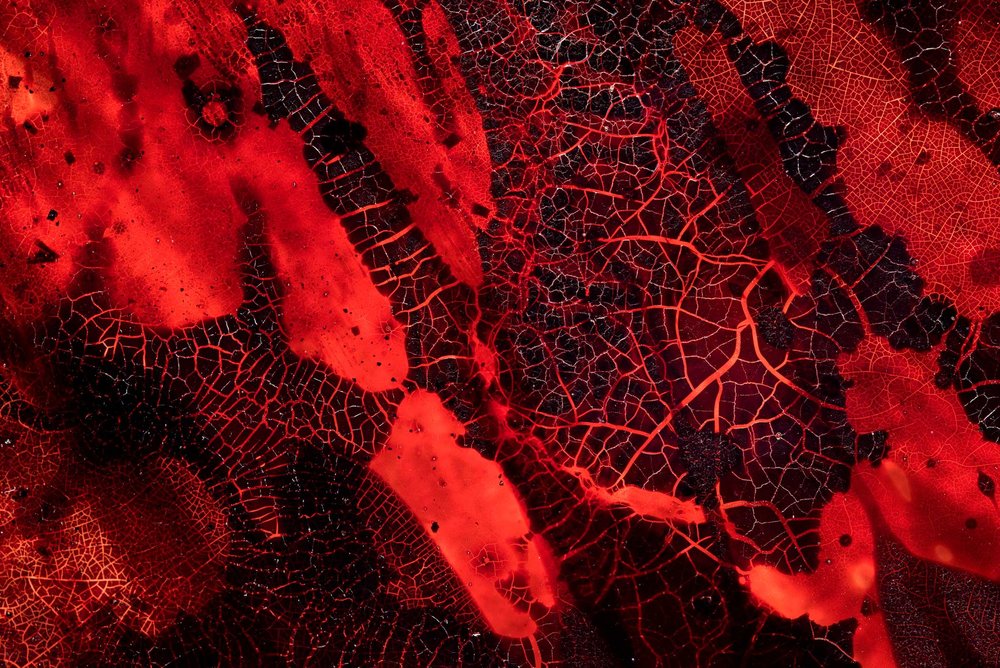
LIFE FORCE. 2012 (detail)
Let’s talk about your career, or if you prefer artistic journey. What were your biggest lessons and hurdles along the way?
Probably the most important lesson was teaching myself how to preserve blood. And to do so in such a way that it maintains the integrity of the colours and textures of the organic material so it won’t change or decompose over time. This process was developed over many years of experimenting, and there were failed attempts along the way, so in actuality, the biggest mistakes were also the greatest lessons – it birthed processes that are still crucial to my practice today.
How does your audience interact and react to your work?
This can depend on the project and obviously with each individual– it’s hard to speak in generalities. However, the Illuminations was very interactive and viewers had blood projected onto them, so they became part of the installation – and as viewers move through the installation, it animates the work through shadows and reflections. Some of the sculptural works are reflective and so a viewer can see themselves through the blood and resin and in a way become part of the sculpture. Very often I hear how viewers are surprised how beautiful blood can actually be when presented in this format and that they might not even understand initially that they’re looking at blood.
Most viewers understand immediately they are not looking at paint, as there is a unique energy that comes from the materials and deep sense that something organic is happening. But it’s not always explicitly clearly that it is blood. Uncovering the truth and feeling the essence of the work is part of the experience.
As far as advocacy projects go, many people are not aware that these discriminatory policies are even in place. This becomes a great opportunity for people to learn about how we need to, as a nation and a global community, find solutions and set policies based on science and not stigma and illogical fears.
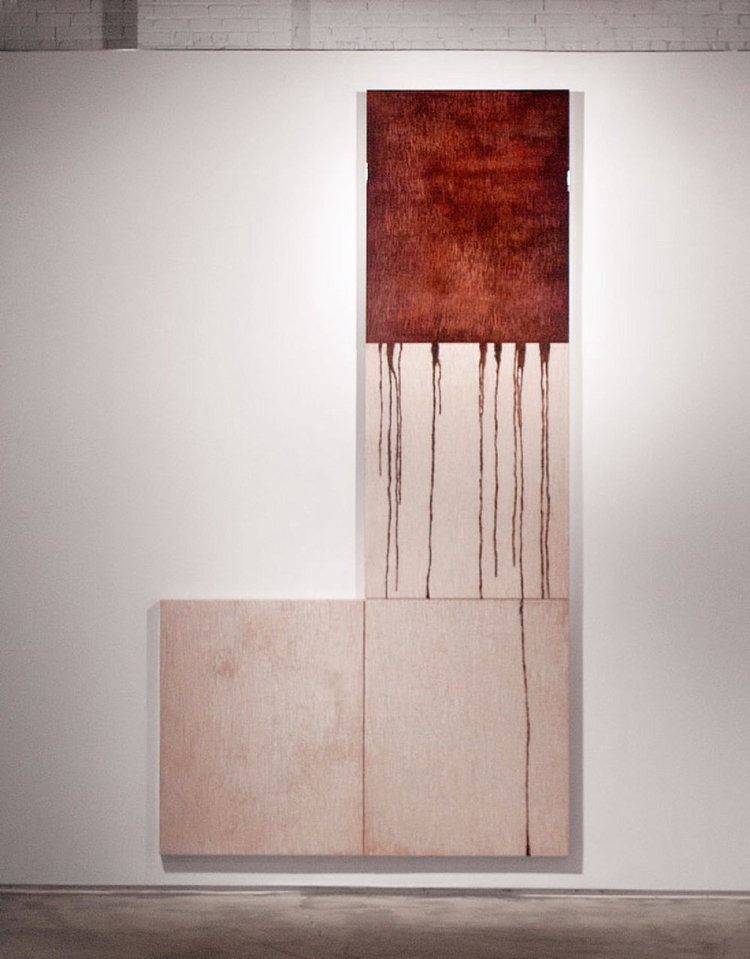
ROZE 1-4. 2011.
Think of the biggest professional risk you have taken. What helped you take that risk?
I wouldn’t necessarily call them risks as much as accepting a challenge when it was presented. And in each instance it was individuals and their support and faith that helped me. A few instances immediately come to mind. The first was creating BAR 1-9, which comprises nine leaning panels that were 32 feet by eight feet. I had never made a work of that scale before. When I have an idea in my mind, I prefer to execute it at full scale right away. I do not typically make prototypes in advance. The inspiration for the work was the passing of a friend. I had always wanted to work on something that was monumental in scale and his passing was reminder that all we have is “now” and that if you want to do something, you must do it now and not wait. There might not be another time.
Blood Mirror project was also drastic step. Up until that point, my entire body of work was created with animal blood. Blood Mirror was the first project with human blood donated by members of the LGBTQI+ community. It required a new way of working with the materials from a technical standpoint.
It also brought a completely different energy to the work. To compete the initial stages of this project required the support of so many people, on many different levels, in addition to actual blood donors. Without this support, it would have been impossible. The collaborations were essential.
When I was invited to present Illuminations at the High Line exhibition, it was by far going to be my largest Illuminations installation. I had never done an installation outdoors and not at that massive scale. A couple months before the installation date, we did some initial tests to experiment with the throw of the projector in the outdoor setting and how the patterns might look on the architectural elements. But it wasn’t until we were on High Line, with all the equipment, projectors and blood panels, that we could put the installation together. Overall we used 20 projectors and covered the entire 14th Street overpass. It was a thrill. Illuminations are always site-specific and the results are only revealed upon the completion of installation.

ROZE 18, 2012 (detail)
What is the best piece of advice you’ve received? Why was it helpful?
The best piece of advice was in the form of a question: “What if you let it drip?” It made me re-evaluate what I viewed as perfection. And in a larger sense, it forced me to think about all the choices I make in the process of creating a work and why I make them, both aesthetically and conceptually.
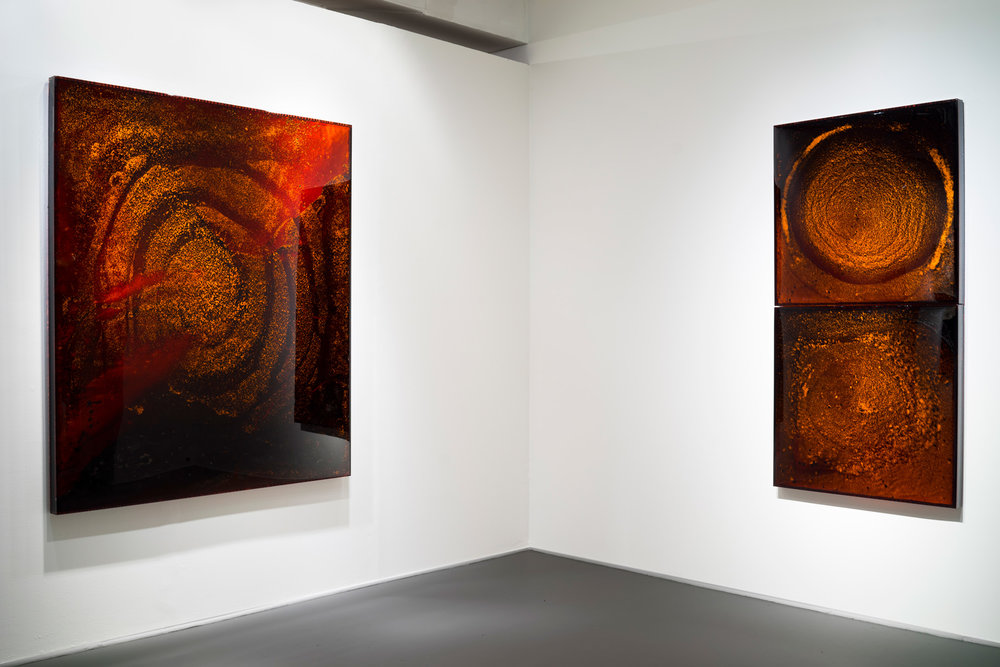
Red Giants, sun-dried blood preserved on plexiglass, UV resin, copper backing
Tell us about your studio, what kind of place is it? Could you describe your usual work day in the studio?
My studio is a warehouse in Ridgewood, Queens. The space is divided into two separate areas. One area is where I work with blood and resin and the other is where I store the finished works. It is always crucial that I have two spaces, as the work zone is temperature controlled at 92°F. This heat is good for the blood and resin. But it is also very important that I have another space where I can safely breathe and that isn’t so hot.
There is no usual day at the studio. The process varies depending on what is being created. But a day can often start with the defrosting of blood, which is stored in a large freezer. And then, depending on the piece being worked on, the application of blood and resin, that process can take many directions and can vary depending on the desired patterns and effects. Also, because of the nature of the material, blood usually needs to be preserved at the exact right moment, and therefore time becomes an important factor. There are days when the studio will run for 24 hours straight based on the process and the cure time for resin. In between producing the artworks, in the downtime, I often do computer work, colour correcting images, work on exhibitions, develop new projects, have studio visits, and handle the other responsibilities of the studio.

URBC8.
Are you more of a studio artist or naturally collaborative by nature? How do you feel about commissions?
I very much like to collaborate. I have collaborated with a filmmaker Leo Herrera, a fashion designer, a brand called Jonny Cota and SKINGRAFT, a global advertising agency called FCB Health, a government agency called NYC Department of Health and Mental Hygiene, and the HIV advocacy organisation (GMHC). I have also worked with medical supervisors and doctors, blood donors, curators and institutions. My studio process is very personal and mostly solo.
What are you working on now? What’s coming next season?
I am currently working on new sculptures that are created from all the blood and resin that falls and hardens on the studio floor. They are then shattered and reassembled into new forms. It becomes another way of recycling the materials.
Before you go – you might like to browse our Artist Interviews. Interviews of artists and outliers on how to be an artist. Contemporary artists on the source of their creative inspiration.






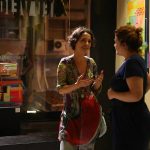


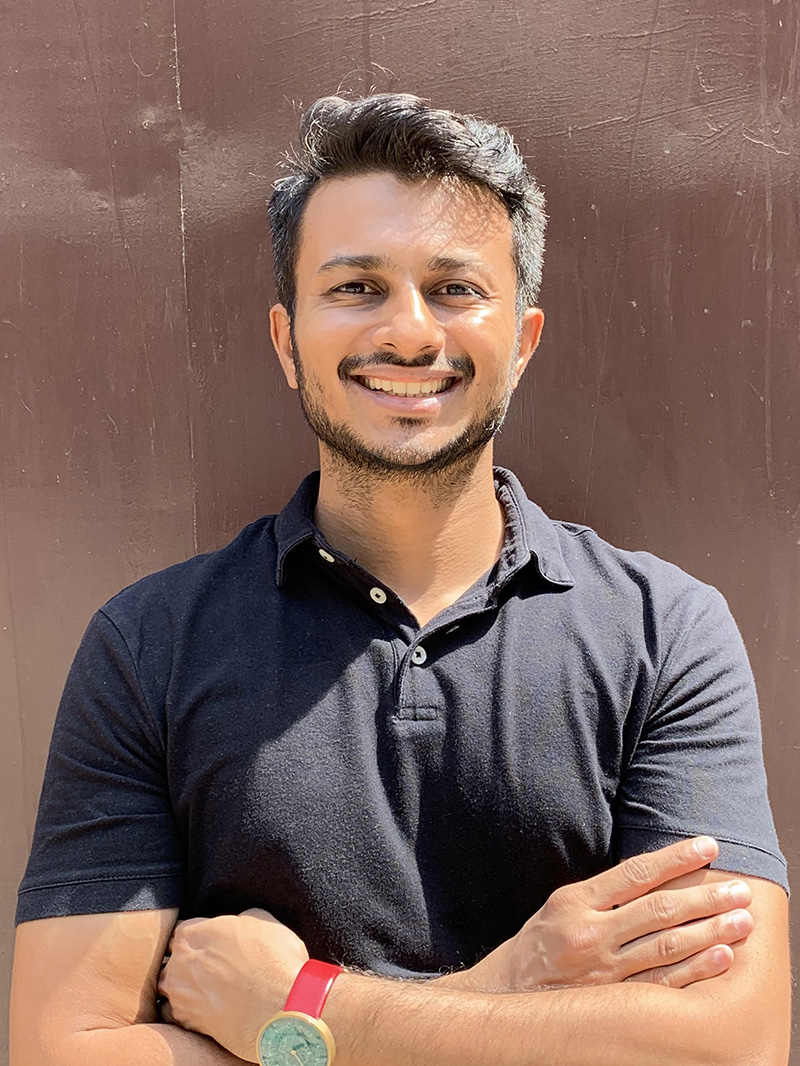

Add Comment